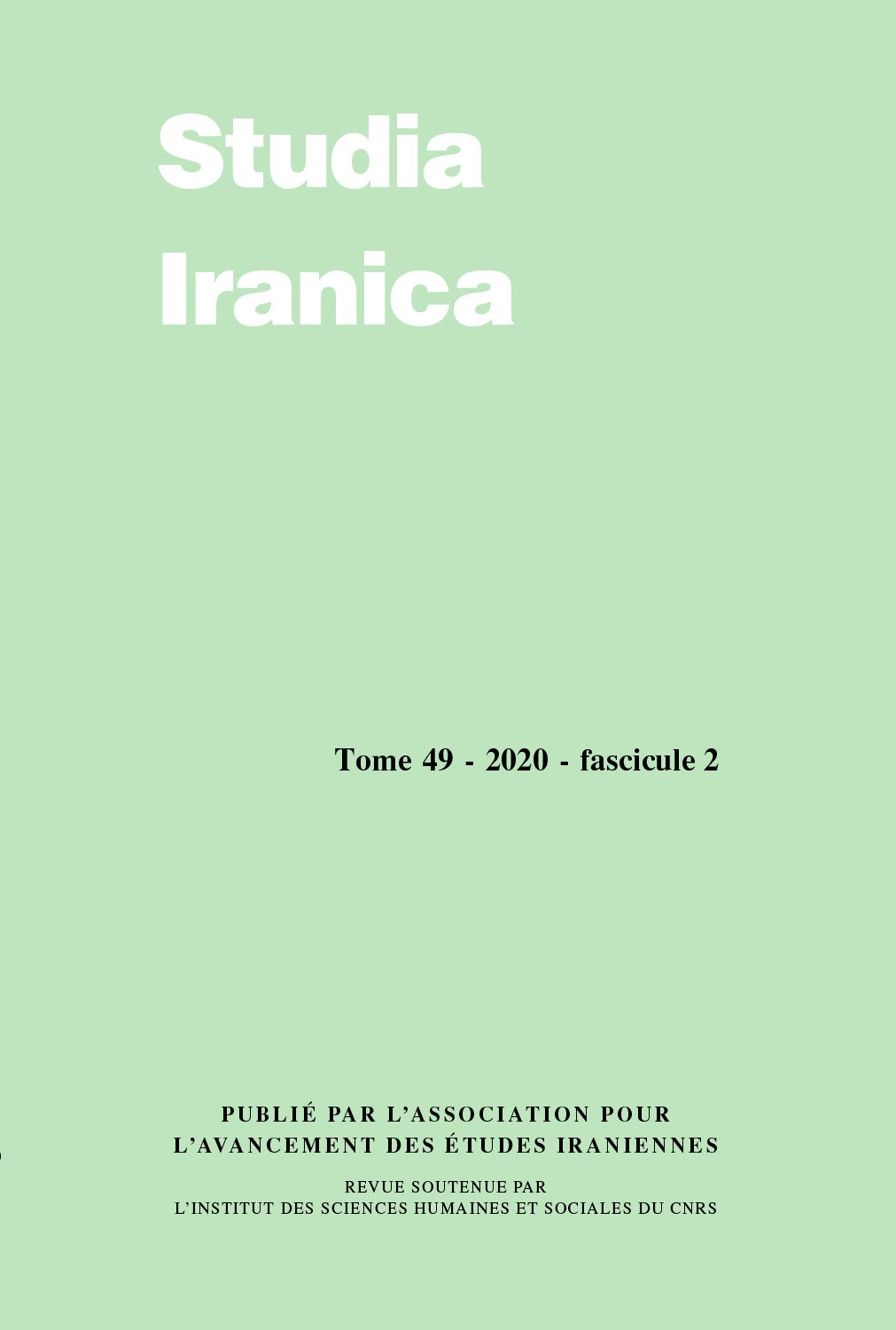 previous article in this issue previous article in this issue | next article in this issue  |

Preview first page |
Document Details : Title: Dispositions testamentaires et financement de la transmission religieuse Subtitle: Le recours au waqf par un gouverneur qajar de la région de Takāb dans la seconde moitié du XIXe siècle Author(s): HERMANN, Denis Journal: Studia Iranica Volume: 45 Issue: 2 Date: 2016 Pages: 275-301 DOI: 10.2143/SI.45.2.3203418 Abstract : L’article étudie quatre waqf établis dans la seconde moitié du XIXe s. par un gouverneur de province qajar qui fut également membre de l’École théologico-mystique de la šayḫiyya. Les waqf que constitua Sulaymān Ḫān Afšār (Šāh) Qāsimlū (m. 1309/1891) participèrent à l’organisation du groupe, notamment en finançant les publications des œuvres des cofondateurs du shaykhisme que furent Šayḫ Aḥmad al-Aḥsā'ī (m. 1241/1826) et Sayyid Kāẓim Raštī (m. 1259/1843). Ils permirent également la remémoration de Sayyid Kāẓim Raštī par l’entretien de sa tombe à Karbala et la distribution d’une allocation à ses descendants masculins. Nous insisterons sur les multiples modifications qui furent apportées à la fonction de ces waqf comme à leur gestion (tawliyat) par leur fondateur, modifications qui furent contestées par les descendants des bénéficiaires et gestionnaires (mutawallī) initiaux. Cette étude est révélatrice du rôle des élites gouvernantes dans la dynamique doctrinale du chiisme en Iran au cours de la période qajare. The paper analyses four waqfs established in the second half of the nineteenth century by a provincial Qajar governor who was also a member of the šayḫiyya, a Shi'i mystical-theological school. The waqfs endowed by Sulaymān Ḫān Afšār (Šāh) Qāsimlū (d. 1309/1891) played an important role in the organization of the group. They helped to fund the publications of the works of the co-founders of Shaykhism Šayḫ Aḥmad al-Aḥsā'ī (d. 1241/1826) and Sayyid Kāẓim Raštī (d. 1259/1843), and keep alive the memory of the latter by maintaining his tomb in Karbala and distributing an allowance to his male descendants. The paper focuses on the many changes that were made by the founder to the function and management (tawliyat) of these waqfs, changes that were challenged by the descendants of the initial beneficiaries and managers (mutawallī). Also, this study reveals the role of the governing elites in the doctrinal dynamic of Shi'ism in Iran during the Qajar period. |
|


